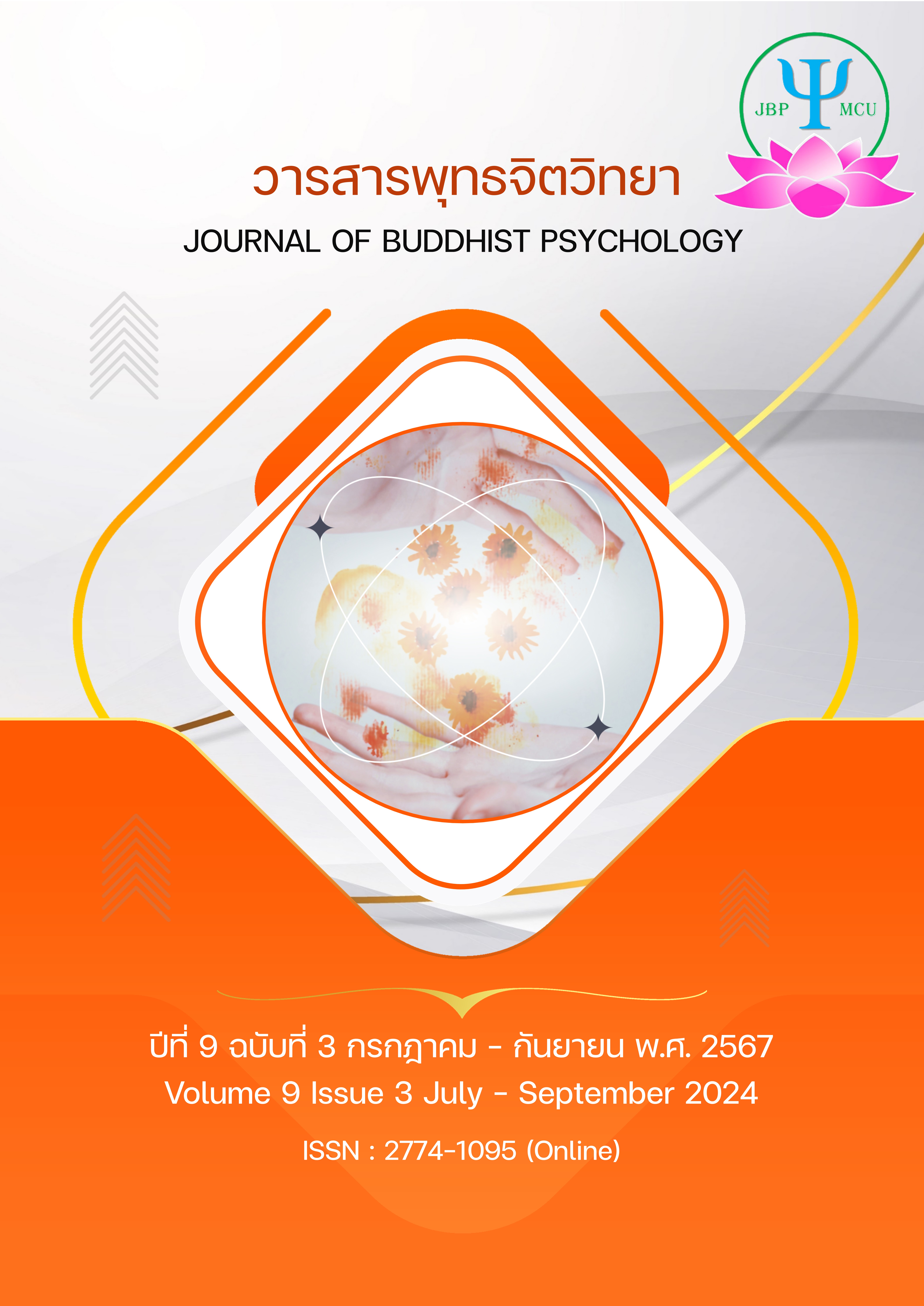The Development of Mantra in Esoteric Buddhism within Mahāyāna and Varayāna Buddhism
Main Article Content
บทคัดย่อ
This paper (1) examined the development of mantra recitation in Esoteric Buddhism within Mahāyāna and Varayāna Buddhism, (2) briefly analysed the essence and historical development of Esoteric Buddhism from India to China and other regions, (3) examined the current and future development of mantras in Esoteric Buddhism, and (4) examines the benefit of the application of two mantras from Varayāna Buddhism, the Six-syllable Mantra (Om Mani Padme Hum) and the Energy Mantra, in improvement of one’s spiritual, physical health and mental health.
Article Details

อนุญาตภายใต้เงื่อนไข Creative Commons Attribution-NonCommercial-NoDerivatives 4.0 International License.
เอกสารอ้างอิง
Baruah, B. (2000). Buddhist Sects and Sectarianism. New Delhi: Sarup & Sons.
Bentor, Y. & Shahar M. (2017). Chinese and Tibetan Esoteric Buddhism. Leiden, Boston: Koninklijke Brill.
Bernardi, L., et al. (2001). Effect of Rosary Prayer and Yoga Mantra on Autonomic Cardiovascular Rhythms: Comparative Study. The British Medical Journal, 323(7327), 1446–1449.
Buswell, R.E. jr. & Lopez, D.S. jr., (2014). The Princeton Dictionary of Buddhism. Princeton and Oxford: Princeton University Press.
D'Angelo, J. (2000). The Healing Power of the Human Voice: Mantra, Chants, and Seed Sounds for Health and Harmony. Rochester, Vermont, Healing Arts Press.
Davidson, R.M. (2002). Indian Esoteric Buddhism: A Social History of the Tantric Movement. New York: Columbia University Press.
Giebel, R.W. (2005). The Vairocanabhisambodhi Sutra (Taisho Vol. 18, No. 848). Translated from the Chinese. Berkeley: Numata Center for Buddhist Translation and Research.
Goble, G. (2019). Chinese Esoteric Buddhism: Amoghavajra, the Ruling Elite, and the Emergence of a Tradition. New York: Columbia University Press.
Gurjar, A.A., Ladhake, S.A., & Thakare, A.P. (2009). Analysis of Acoustic of ‘Om’ Chant to Study its Effect on the Nervous System, International Journal of Computer Science and Network Security, 9(1), 363-367.
Hare, E.M. (tr.). (2006). The Book of the Gradual Sayings (Anguttara-Nikaya) or More-Numbered Suttas Volume IV: Books of the Sevens, Eights and Nine. Lancaster: Pali Text Society.
Kalu Rinpoche. (1995). Secret Buddhism: Vajrayāna Practices. Translated by C. Buchet, San Franscisco: ClearPoint Press, 1995.
Jigme, L., Patrul, R. & Mahapandita, G. (2006). Deity, Mantra and Wisdom: Development Stage Meditation in Tibetan Buddhist Tantra. Ithaca, New York: Snow Lion Publications.
Mahatthanadull, S. & Mahatthanadull, S. (2019). Human Behaviours in Promoting Balance of Family according to Buddhist Psychology. Journal of MCU Peace Studies,8(1), 21-31.
Mahatthanadull, S. & Kraichak, O. (2022). Enhancing Emotional Strength of Professional Nurses: Buddhist Principles and Model. Rangsit Journal of Social Sciences and Humanities, 9(2), 1-7.
Mark, J.J., (2021). Esoteric Buddhism, World History Encyclopedia. Retrieved March 31, 2023, from https://www.worldhistory.org/Esoteric_Buddhism/
McBridge, R.D. (2004). Is There Really “Esoteric” Buddhism?. Journal of the International Association of Buddhist Studies, 27(2), 329-356.
Orzech, C.D. (2006). The Great Teaching of Yoga, the Chinese Appropriation of the Tantras, and the Question of Esoteric Buddhism. Journal of Chinese Religions, 34, 29-78.
Orzech, C.D., Sorensen, H.H. & Payne, R.K. (2011). Esoteric Buddhism and the Trantras in East Asia. Leiden; Boston, Koninklijke Brill.
Peoples, D.O. (2011). Chanting the Sangiti Sutta, Bangkok: Mahachulalongkornrajavidyalaya Press.
Pereira, C. (2016a). Effect of Hypothermia on Cognitive Capabilities in Snail (Achatina fulica) and Their Recovery Post Exposure to the Buddhist Meditative Chant Om Mani Padme Hum. Journal of Entomology and Zoology Studies, 4(2), 1-6.
Pereira, C. (2016a). Frequencies of the Buddhist Meditative Chant – Om Mani Padme Hum. International Journal of Science and Research, 5(4), 761-766.
Roberts, P.A. & Tulku Yeshi. (2023). The Noble Mahāyāna Sutra The Basket’s Display (Āryakāraṇḍavyūhanāmamahāyāna Sūtra, Degé Kangyur, 51, folios 200.a–247.b). Translated from Tibetan. 84000: Retrieved April 5, 2023, from Translating the Words of the Buddha. https://read.84000.co/translation/toh116.html
Sinnett, A.P. (1887). Esoteric Buddhism. 6th Ed. Boston and New York: The Riverside Press.
Sorensen, H.H. (2021). The Meeting and Conflation of Chan and Esoteric Buddhism during the Tan, Chán Buddhism in Dūnhuáng and Beyond: A Study of Manuscripts, Texts, and Contexts in Memory of John R. McRae. Boston: Koninklijke Brill.
Studholme, A. (2002). The Origins of Om Manipadme Hum: A Study of the Kāraṇḍavyūha Sūtra. Albany, New York: State University of New York Press.
Teh, Y.Y. (2024). Piloting a Narrative-mantra multi-clinician group for Mental Health Clinicians at a Locality Child and Adolescent Mental Health Service (CAMHS) in London UK. Journal of Family Therapy, 46(2), 196-210.
Verma, G. & Araya, R. (2010). The Effect of Meditation on Psychological Distress among Buddhist Monks and Nuns. International Journal of Psychiatry in Medicine, 40(4), 461-468.
Woodward, H. (2004). Esoteric Buddhism in Southeast Asia in the Light of Recent Scholarship. Journal of Southeast Asian Studies, 35(2), 329-354.
Yisie Vorle (Kunsang Jigme Dorje), His Holiness. (2024). Path Beyond Samsara: Invaluable Insights to Dharma Practice. Translated from Chinese by Kunsang Disciples. Shangbala: Singapore.
Zhang, J. (2018). The Buddhist Sangha Life in the Seventh Century: a Study Based on a Record of the Inner Law Sent Home from the South Seas of Yijing (Doctoral Dissertation). Mahachulalongkornrajavidyalaya University.


